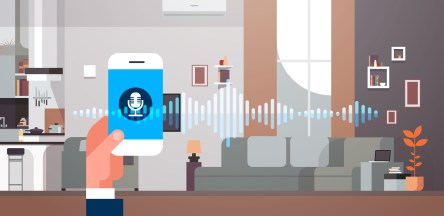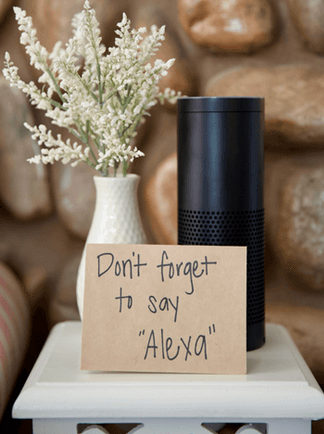Voice-controlled online entertainment is flourishing in American homes. Many multifamily firms have expressed interest in smart speakers and similar tech options for their properties. Until a few industry challenges are resolved, however, voice-activated gadget cannot fulfill their potential in multifamily applications. Growing Popularity Consumers love voice-controlled devices. In 2017, about 40 percent of broadband households used voice recognition software. The growth continues. Research and analysis firm Parks Associates estimated that household penetration will reach 47 percent by 2022. Voice-activated artificial intelligence (AI) offers multiple conveniences for users. With a simple command or question, users receive helpful information such as commute updates, weather forecasts, and reminders. Consumers also turn to voice recognition software to manage their other devices. Last year, the average American household had 8.8 devices with unique interfaces. Voice-activated technology bypasses the need to switch between devices by offering one interface for them all. The growing popularity and usefulness of voice-controlled AI are promising. Though the technology appeals to consumers, it may not yet offer full value to property owners. Growing Pains Consumer-friendly AI is capable of more now than ever before. Oddly, flaws with basic functionalities still plague the technology, causing trouble for multifamily applications. Command comprehension is the pitfall most likely to annoy users without causing serious damage. Voice-controlled tech may not respond properly because it does not understand user commands. Virtual assistants fail to accommodate for variables such as user syntax, dialects, and the use of non-English words or names. As a result, user satisfaction with virtual assistants—and the properties that carry them—will vary. Connectivity poses a greater issue. Voice-controlled tech often integrates with other devices. A smart speaker like Alexa, for example, can control the thermostat, lighting, and alarm system for a unit. Unfortunately, interoperability—the ability for one gadget...
Alexa and the Elderly...
Amazon Takes on Senior Living
When conversation shifts to home automation, references to Millennials are rarely far behind. While it’s true that the emerging generation of homeowners loves their tech toys, they aren’t the only ones harnessing the power of smart home technology. Senior living providers have joined other industry leaders in the pursuit of more automated options for residents as well. Amazon + Senior Housing Amazon has made huge strides as a provider of integrated automation and voice control for major home builders across the industry, including prominent developers Lennar and Shea Homes. Communities created by these companies are part of a growing “Wi-Fi Certified” trend, offering housing with built-in automation and voice control. For seniors, that means controlling features within their homes and interacting with the outside world is simplified, thanks to voice commands. Enabling the integration is Amazon’s Alexa, a cloud-based virtual assistant, which appears in various forms throughout the homes. She’s most often takes shape as a sleek, tabletop pillar in the Echo line of products. Through Alexa, seniors can set reminders for appointments and medications; control music and home ambiance; check weather; get news and sports updates; and order just about anything fathomable on Amazon.com. Amazon Echo Dot speakers permit seniors to access Alexa anywhere in their home. They also serve as Bluetooth speakers that are capable of connecting to a myriad of seniors’ personal devices. With so many ways to integrate, Amazon’s variations on Wi-Fi centric homes are quickly becoming the new standard for incoming baby boomers, but the tech toys come with a few caveats. Too Smart for Its Own Good? As technology develops at a rapid pace, home builders are left wondering just how quickly their newly installed gadgets will become obsolete. Alternatively, what are the costs associated with staying up-to-date...


